 |
|||||||||||
Cherie and I were linked on several occasions, even before we met. One such example is the eruption of Mt. St. Helens, which occurred on Sunday morning, May 18, 1980.
Cherie lived in Portland, Oregon, at the time, and I was serving in the US Air Force at Fairchild AFB, outside Spokane, Washington.
The first series of photos on this page are ones which Cherie took showing the view of the volcanic eruption from where she lived. It's pretty amazing to think you can just walk outside your home and see a volcano going off! Seeing this prompted Cherie to contemplate nature's fury. Less than a month later she moved to California, figuring she had a better chance against earthquakes than volcanoes.
Below Cherie's photos are ones which I took of the effects several hundred miles away at Fairchild, along with a bonus section about another dangerous happening, about ten days after Mt. St. Helens blew. |
 |
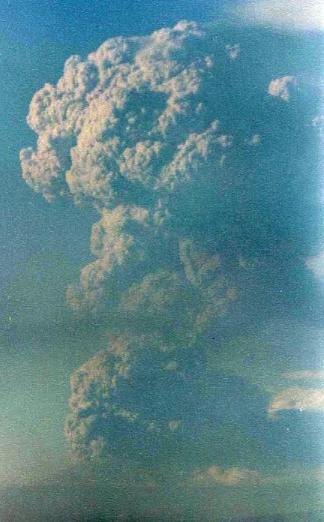 |
||||
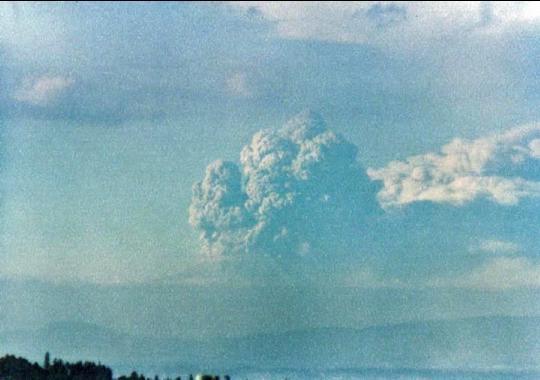 |
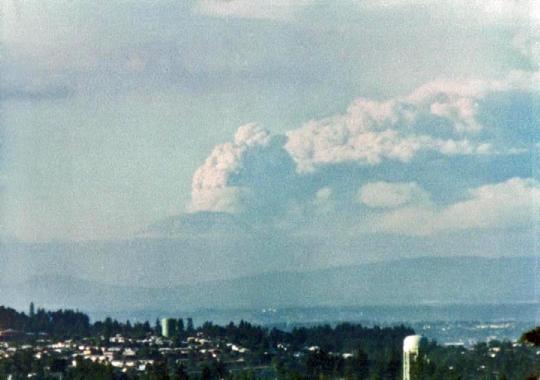 |
|||
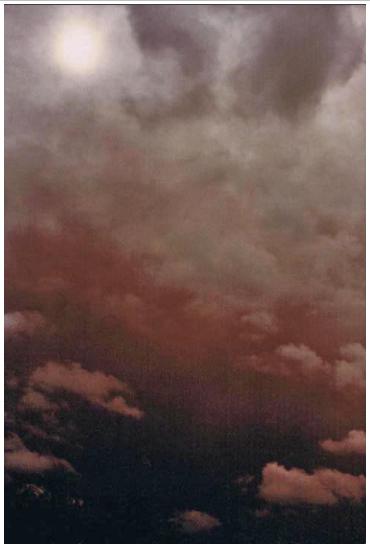 |
||||
At Fairchild that day we were having our annual Open House and Air Show. An estimated crowd of 60,000 people was in attendance. Around 11:00 am an announcement went out to everyone that the Mt. St. Helens eruption had occurred—and the ash cloud was heading directly toward Fairchild. The show was shut down and anyone not assigned to the base was asked to leave. Huge traffic jams ensued.
Aircraft which had come to Fairchild from other bases were not allowed to leave, and instead everything was quickly put into the hangers around the flightline, including the SR-71 Blackbird, which was making its first appearance at our event.
Around 1:00 pm, the sky started to change. Initially it had the dark appearance associated with an incoming rainstorm, yet there were still no clouds! Then we saw clouds begin to appear, but they were anything but white and puffy, instead, they were a dark grey, pushing ahead of the first wisps of volcanic ash as it passed high overhead. Soon the ash completely replaced any normal clouds, and it became a deep black ceiling overhead. We watched in awe as it started to descend.
By about 2:30 pm, the darkness was nearly complete, with just a slim band of sunlight along the horizon. Within a few minutes that too disappeared and we were completely enveloped in a darkness unlike anything ever experienced, even at midnight on a socked-in, moonless night.
The feeling was oppressive and scary, especially when the ash itself began to fall. Everyone retreated indoors. We watched the black snowfall start to pile up on the ground, unsure when or if it ever would stop.
Not many people slept at all that night, at least that was the case in our barracks. Instead we turned it into an all night "end-of-the-world" party. In my room we brought in lots of chairs and setup a marathon game of Monopoly to pass the hours to see if the Sun would ever rise again.
In the morning, it was still dark and grey, but the absolute darkness had dissipated, leaving behind a world enshrouded by ash. |
||||
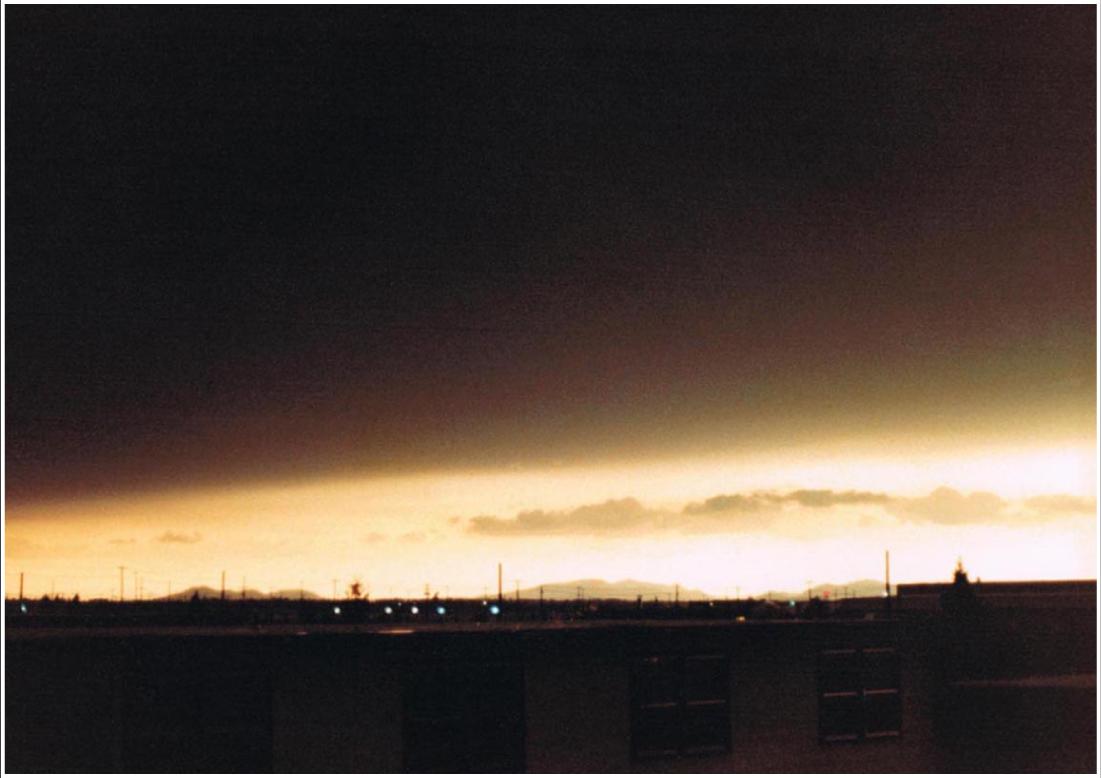 |
||
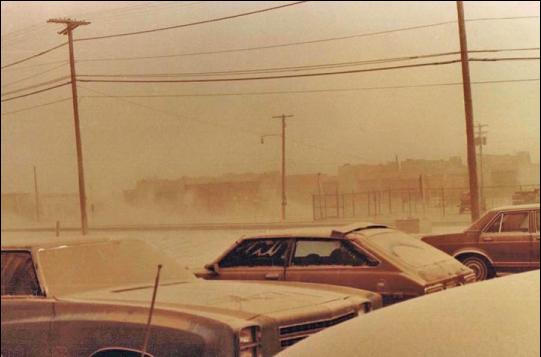 |
||||
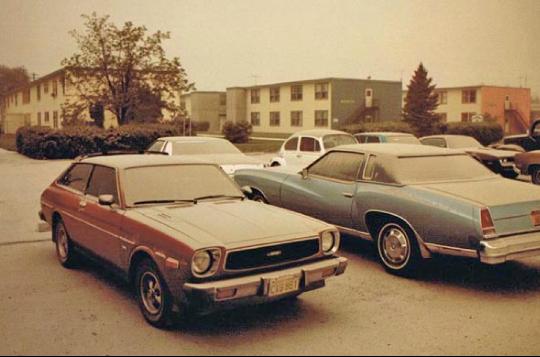 |
||||
Ash was everywhere. It permeated every nook and cranny. Those who got in their cars and flicked on the wipers to clear their view were rewarded with an irreparably scratched windshield since the primary ingredient of the ash was glass. Instead, I cleared a small spot carefully by hand on my Corolla, then went to the base service station and used the tire air hose to blow off the entire car.
The ash was insidious in that no matter how clean you thought everything was, it would just come right back. Even more than six months later, on my way home after leaving the Air Force, anytime I turned on the interior fan I had to hold my breath because I always got a facefull of ash. |
|||||
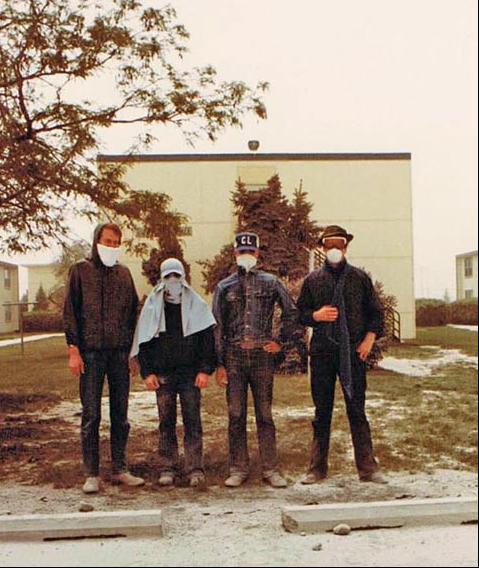 |
|||||
 |
|||||
For several weeks we were required to wear protective clothing and masks as inhaling the ash was extremely unhealthy. I'm on the right with my good friend Dave Danner next to me. (Dave is a cousin to actress Blythe Danner.) |
|||||||
 |
|||||||
I went up through the hatch to the barrack's roof and found a carpet of undisturbed ash. To me, it was the same color and consistency as the dust stirred by the boots of our Apollo astronauts. So, I carefully planted my tennis shoe and re-created a famous shot from Apollo 11 (below). |
|||||||
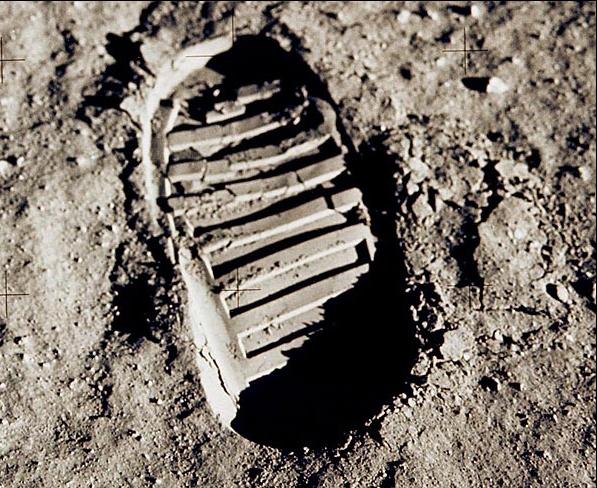 |
|||||||
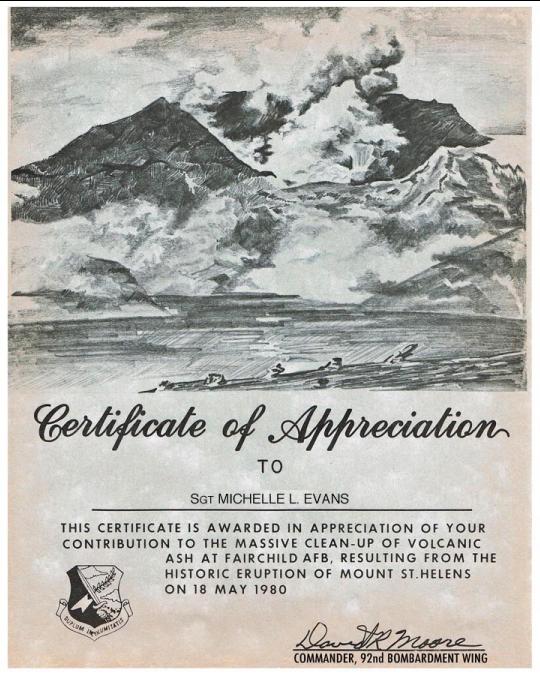 |
||||
Fairchild AFB was declared a disaster area, as was Spokane and many other Eastern Washington communities. We were literally under martial law for a period of time and no one was allowed to go anywhere except in an emergency. Washington State Patrol had to have semi-truck radiators outfitted onto their cars in order to protect the engines from the destructive forces of the ash.
On base, our movements were limited to and from the chow hall for food. That was it for many days. Then the clean up began. Every person on base was assigned a broom and we swept everything from the streets and buildings to the miles-long runway! Water from firetrucks was used to spray the ash away from places, but it would take only minutes for it to dry and be back in the air.
The first aircraft to get away was the SR-71 which had been stranded at Fairchild, prevented from returning to its home base at Beale AFB in Marysville, California. The Blackbird squadron there had been extremely angry that they couldn't get their spyplane back home, but it wasn't like a volcanic explosion had been on anyone's agenda. About two weeks into the ordeal things were cleared enough to allow it to return home, although Fairchild itself did not return to active operation for a month.
Once the job was finally completed those who did their part were issued the citation shown to the right, to reflect all that had occurred.
For a great collection of photos from the Eastern Washington area during the aftermath of Mt. St. Helens, check here. |
||||
— Three Tornadoes Hit Fairchild — |
||
The first week following the eruption was a messy one, with the entire area under a blanket of dark grey ash. Once we started to clean things up, the base began to look like itself again, but then nature wasn't finished with us yet. The following Sunday, May 25, St. Helens went off again and another ash cloud hit us, although this time it was very minor compared to the initial May 18th event.
I recall my group was outside the Base Headquarters building on clean-up detail when the alert sirens went off a few days later. Our first thought was that another ash cloud was coming our way, but that was not the case. Word was quickly passed that a series of tornadoes had been spotted and everyone was to head for the underground shelters.
As everyone ducked and covered, I instead dropped my broom and headed for my barracks room to grab my camera! The photos which follow were taken from the upper floor fire escape platform at the south end of my barracks building, then some after I raced downstairs in case I had to make a quick getaway.
It was fascinating to watch the funnel clouds form, then luckily dissipate before they got too near. It was later learned that three tornadoes actually touched down on base property. |
 |
|||||
When I got onto the fire escape it only took a moment to find the angry funnel cloud forming. Here you can see it just to the left of the telephone pole. |
||||||
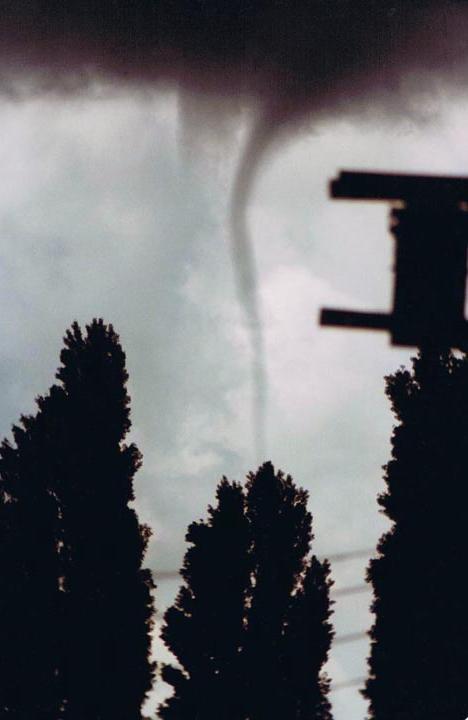 |
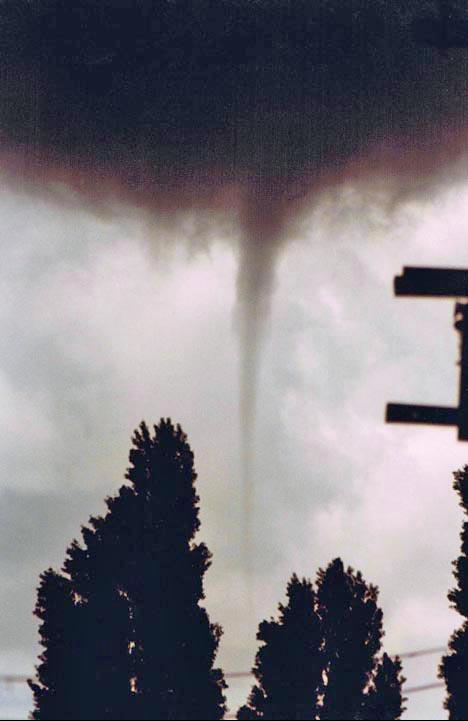 |
|||
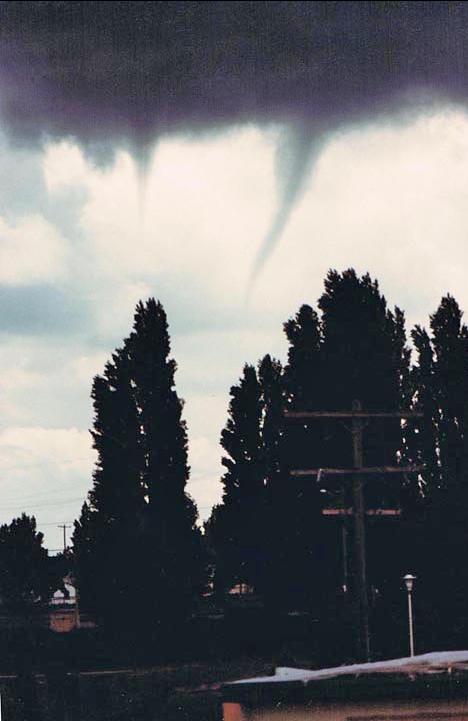 |
||||
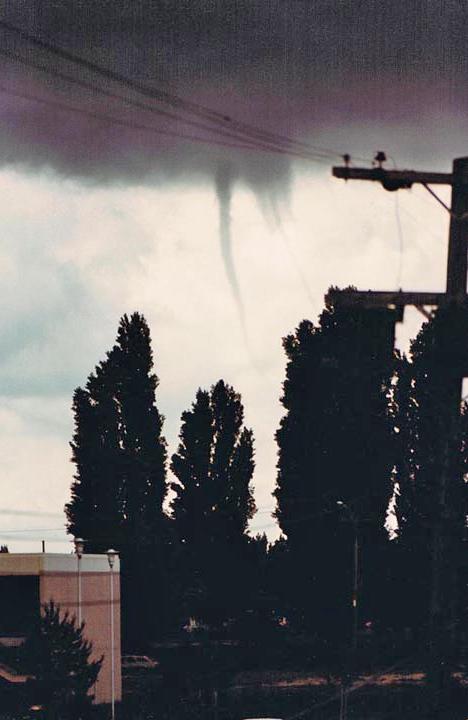 |
||||
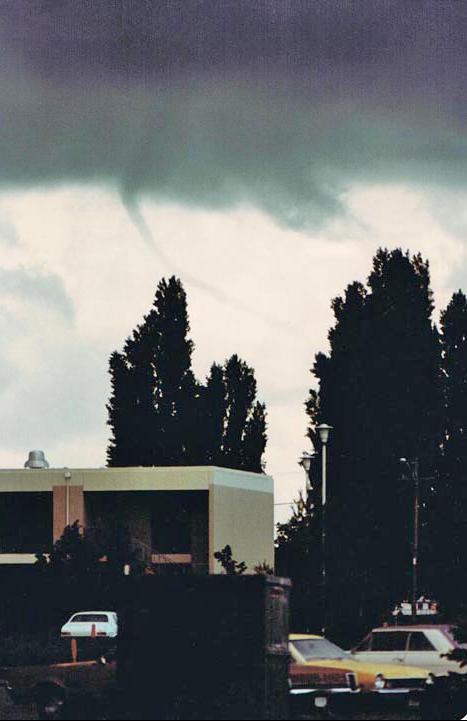 |
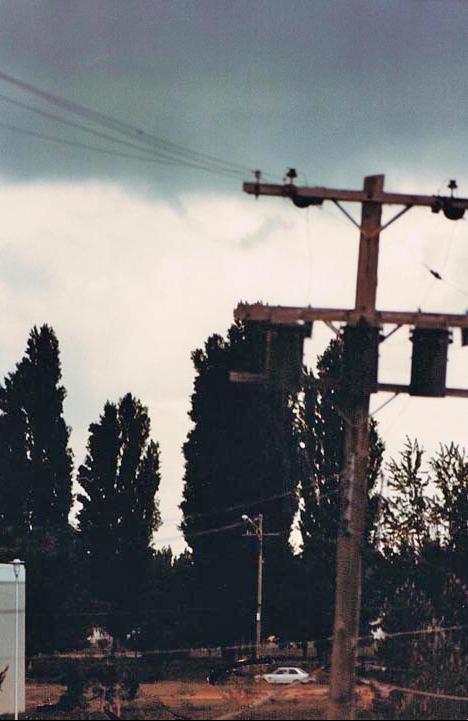 |
|||
After running its course, the tornadoes appeared to literally be swallowed back up into the cloud which had spawned them. Time to go back to cleaning up the ash... |
||